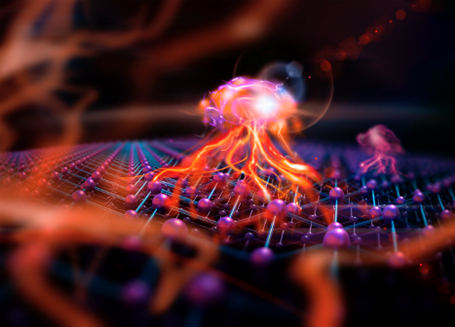
Physicists created a new ultra-thin two-layer material with quantum properties that normally require rare earth compounds. This material is easy to make and does not contain rare earth metals, and it may provide a new platform for quantum computing and advance research into unconventional superconductivity and quantum criticality.
The discovery emerged from research efforts to create a quantum spin liquid to investigate emergent quantum phenomena such as gauge theory. It involves fabricating a single layer of atomically thin tantalum disulphide, however the process also creates islands that consist of two layers. In the islands, they found that interactions between the two layers induced a phenomenon known as the Kondo effect, leading to a macroscopically entangled state of matter producing a heavy-fermion system.
The Kondo effect is an interaction between magnetic impurities and electrons that causes a material’s electrical resistance to change with temperature. Electrons behave as though they have more mass, causing these compounds to be called heavy fermion materials, a hallmark of materials containing rare earth elements.
Heavy fermion materials are important in several domains of cutting-edge physics, including research into quantum materials. They could act as topological superconductors, useful for building qubits that are more robust to noise, reducing error rates in quantum computers.
Although both layers in the new material are tantalum sulphide, there are important differences in their properties. One layer behaves like a metal, conducting electrons, while the other layer has a structural change that causes electrons to be localized into a regular lattice.
This new heavy fermion material also offers a powerful tool for probing quantum criticality.
Original Release: Eureka Alert
